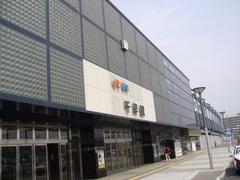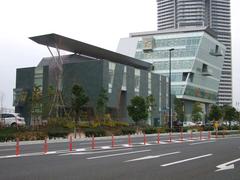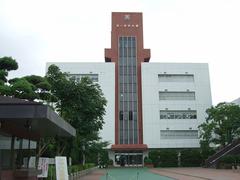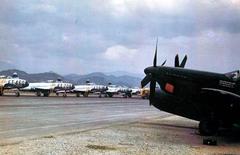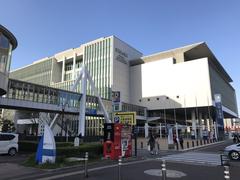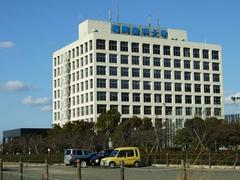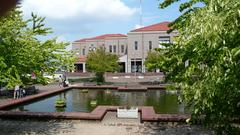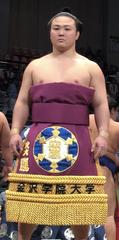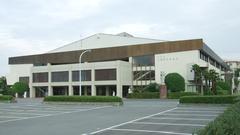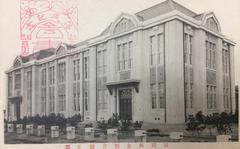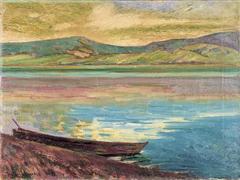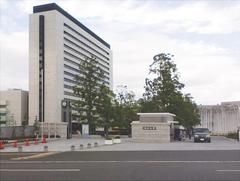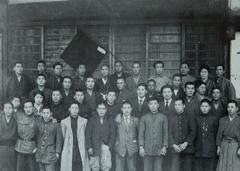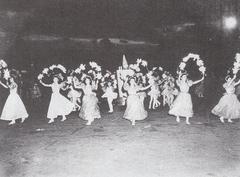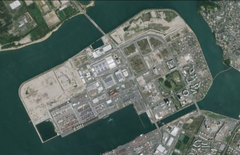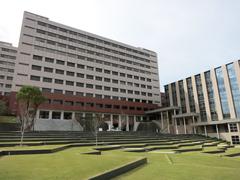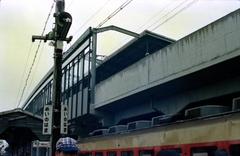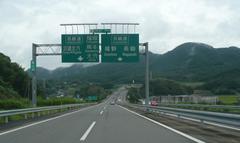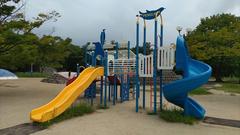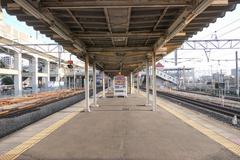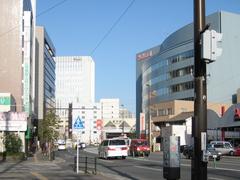Jōsei-Danchi Fukuoka Visiting Hours, Tickets, and Travel Guide
Date: 04/07/2025
Introduction to Jōsei-Danchi: A Window into Postwar Japan
Jōsei-Danchi in Fukuoka, Japan, stands as a living testament to the country’s postwar social transformation and urban planning. Developed during the rapid economic recovery of the 1950s and 1960s, this residential complex was part of a nationwide effort to address severe housing shortages after World War II. Built by the Japan Housing Corporation, Jōsei-Danchi features mid-rise concrete apartment blocks arranged around communal green spaces, embodying the era’s vision for modern, community-oriented living (ArchDaily). Its design draws from international models, adapted to suit local climate and culture, resulting in a self-contained “new town” for the growing urban middle class.
Today, Jōsei-Danchi remains a dynamic community, home to elderly residents, families, and immigrants, mirroring Japan’s evolving demographics. Accessible year-round without entrance fees, it invites respectful exploration and offers convenient access to Fukuoka’s broader historical and cultural sites, including Maizuru Park, Kushida Shrine, and the Nakagawa River Walk (Fukuoka City Official Tourist Guide).
This guide delivers essential visitor information—recommended visiting hours, access, transport options, nearby attractions, and practical tips—to help you experience Jōsei-Danchi and its surrounding urban fabric.
Contents
- Introduction
- Historical Background and National Context
- Architectural Features and Urban Planning
- Social Significance and Demographics
- Cultural Representation
- Jōsei-Danchi in Fukuoka’s Urban Evolution
- Visitor Information
- Visiting Hours
- Tickets and Entry
- Accessibility
- Guided Tours and Events
- Transportation and Best Times
- Nearby Attractions
- Preservation and Contemporary Challenges
- Frequently Asked Questions (FAQs)
- Conclusion
- Sources
Historical Background and National Context
Jōsei-Danchi, like other danchi (団地) across Japan, emerged as a response to acute housing shortages after World War II, when nearly half of Japan’s urban dwellings were destroyed (Village House). As cities like Fukuoka grew rapidly during the “Japanese economic miracle,” the government established the Japan Housing Corporation in 1955 to develop large, standardized apartment complexes for the urban workforce (ArchDaily).
Jōsei-Danchi exemplifies the national ambition of the era: providing affordable, hygienic, and modern housing to support economic growth and the transition to nuclear families.
Architectural Features and Urban Planning
Danchi such as Jōsei-Danchi were conceived as self-sufficient neighborhoods, or “new towns,” often situated on city outskirts. Their design was inspired by Soviet-style prefabricated buildings but adapted to suit Japanese lifestyles and climate (Village House).
Key Features:
- Low- to mid-rise concrete blocks encircling communal gardens.
- Standardized 2DK floor plans (two rooms plus dining/kitchen), which became the standard for postwar Japanese families (Springer).
- Shared amenities: Playgrounds, laundry rooms, and small shops fostered a sense of community.
- Wide, sunlit walkways and open courtyards for both recreation and practical needs.
Integration with public transport, schools, and parks was intentional, facilitating easy access to city life while nurturing a sense of belonging (Sabukaru).
Social Significance and Demographic Change
During the 1960s and 1970s, danchi like Jōsei-Danchi symbolized upward mobility and modernity. Families faced intense competition for apartments, with tenancy lotteries sometimes offering just a 1-in-145 chance (Sabukaru). Moving into a danchi marked a leap from cramped wooden homes to spacious, well-equipped apartments.
As Japan’s economic landscape evolved and private home ownership grew, many danchi became associated with an aging population and social isolation. Today, residents of Jōsei-Danchi include elderly citizens, low-income families, immigrants, and single parents (ArchDaily). While some communal spaces are quieter, the complex remains a microcosm of broader societal changes.
Cultural Representation
Danchi have become potent cultural symbols in Japan, depicted in anime, literature, and film as both nostalgic and melancholic. Series like “Neon Genesis Evangelion” use danchi backdrops to convey themes of isolation and faded idealism (Sabukaru). Yet, recent scholarship emphasizes the resilience and community spirit within these complexes (Springer).
Understanding Jōsei-Danchi requires recognizing this dual identity: both as an emblem of postwar aspirations and as a lived environment for today’s diverse residents.
Jōsei-Danchi in Fukuoka’s Urban Evolution
Fukuoka, a city shaped by centuries of trade and migration, underwent rapid transformation in the postwar era (Fukuoka Now). As danchi like Jōsei-Danchi were constructed, they played a crucial role in absorbing new urban populations and supporting industrial growth. Today, Jōsei-Danchi is woven into a cityscape that blends ancient temples, bustling shopping arcades, and modern residential zones (Visit Inside Japan).
Visitor Information
Visiting Hours
Jōsei-Danchi is a residential area, open to the public at all times. For an optimal and respectful experience, visit during daylight hours (8:00 AM – 6:00 PM).
Tickets and Entry
There are no entrance fees or tickets required—Jōsei-Danchi is not a formal tourist attraction but a living community. Please respect residents’ privacy and property.
Accessibility
The complex features flat walkways and open courtyards, generally accessible for visitors with mobility challenges. However, some older buildings lack elevators.
Guided Tours and Special Events
Official guided tours are rare, but local community centers may host events or informal tours. Community festivals and workshops occasionally take place; check local event listings or community bulletin boards for updates.
Transportation and Best Times
Jōsei-Danchi is easily reached via Fukuoka’s public transport:
- By Train/Bus: Use Nishitetsu trains or buses from central Fukuoka (Hakata, Tenjin), with connections to the danchi area (Japan Guide; Matcha Japan).
- By Taxi or Car: Taxis are widely available; parking may be limited.
Best Times: Weekdays are quieter; weekends may see more community activity.
Nearby Attractions
Enhance your visit by exploring:
- Maizuru Park & Fukuoka Castle Ruins: Scenic ruins in a historic park setting.
- Hakata Old Town: Traditional streets, temples, and shopping arcades.
- Nakagawa River Walk: Picturesque strolls along the river.
- Ohori Park: Urban oasis with walking paths and gardens.
Preservation and Contemporary Challenges
Japan’s aging population and urban priorities pose challenges for danchi like Jōsei-Danchi. Some complexes are being redeveloped, others renovated, and some face demolition. Initiatives in Fukuoka aim to modernize infrastructure, improve accessibility, and revitalize communal areas, balancing affordability with heritage conservation (Sabukaru; Evrimagaci).
Frequently Asked Questions (FAQs)
Q: What are the visiting hours for Jōsei-Danchi?
A: Open at all times; visit during 8:00 AM – 6:00 PM for best experience.
Q: Is there an entrance fee or ticket required?
A: No, entry is free.
Q: Are guided tours available?
A: Not officially, but check with local community centers or tourism agencies.
Q: How do I reach Jōsei-Danchi by public transport?
A: Use Fukuoka’s Nishitetsu trains/buses; refer to Japan Guide or Crossroad Fukuoka.
Q: What other sites should I visit nearby?
A: Maizuru Park, Hakata Old Town, Nakagawa River Walk, and Ohori Park.
Conclusion
Jōsei-Danchi offers a unique and authentic glimpse into Japan’s postwar social history, urban design, and community life. Its architecture and evolving population tell stories of resilience, adaptation, and continuity. For travelers, a visit to Jōsei-Danchi—combined with Fukuoka’s historical sites—provides a rich perspective on the city’s multifaceted identity.
For real-time updates, travel tips, and personalized recommendations, download the Audiala app. Explore further with Sabukaru, ArchDaily, and the Fukuoka City Official Tourist Guide.
Sources and Further Reading
- The Rise and Fall of Danchi: Japan’s Largest Social Housing Experiment, ArchDaily
- Hana Yori Danchi: Soviet Chic to House the Corporate Samurais, Sabukaru
- Exploring Jōsei-Danchi: Visiting Hours, Tickets, and Fukuoka Historical Sites, Village House
- Fukuoka City Official Tourist Guide
- Discover Fukuoka History Walking Along Nakagawa River, Visit Inside Japan
- Fukuoka Prefecture’s Vision for Urban Development, Evrimagaci
- Best Places to Visit Fukuoka, Klook Blog
- Exploring Fukuoka: Best Neighborhoods, Travel on the Horizon
- Best Things to See and Do in Fukuoka, JapanInsides
- Japan Guide: Transportation in Fukuoka
- Matcha Japan: Fukuoka Transportation
- Crossroad Fukuoka: Access to Fukuoka
- Japan Travel: Transportation and Navigation
